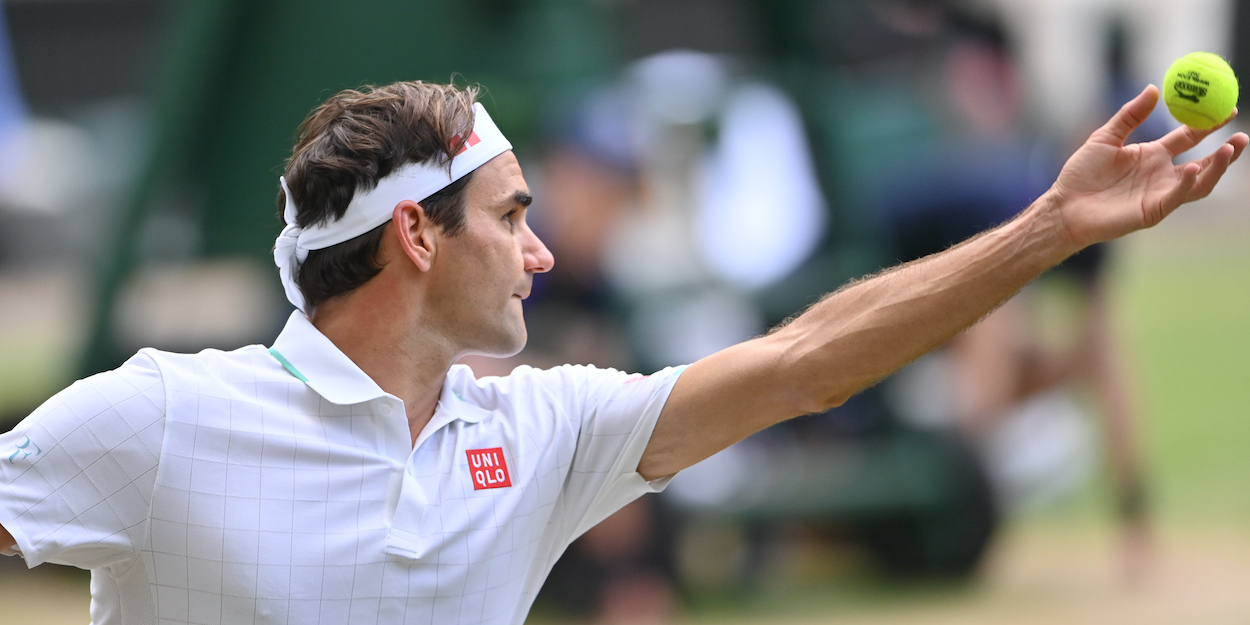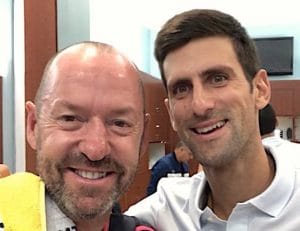
How to serve in tennis – Serving situations
Deciding what to do with your serve and how to put ideas into action is vital for any player looking to control a contest.
With the help of Craig O’Shannessy of Brain Game Tennis, we at Tennishead have some key information you ought to know in order to get the most out of your service games.
Make sure to also read our piece on service factors and another on why a ‘serve plus one’ mentality can be so useful.
How to serve – shift your mindset
First serve
According to O’Shannessy, many players use their first serve the wrong way.
“Is it possible to make too many first serves?” He asks.
“The answer is: yes it is.”
“The players that are making 67, 70%, 75% of their first serves.
“I look at those leading 10-15 players in this column.
“They hardly win a match!
“And the reason is they are not letting the first serve behave like it needs to, which is a weapon.”
O’Shannessy wants you to go after your first serve.
Hit it hard, but don’t let it get too wild.
Second serve
“As you work on your second serve, one of the things that you have control of is reducing the amount of double faults,” O’Shannessy points out.
O’Shannessy does not want you to back off your second serve.
Instead, you should swing with similar force but adjust your technique.
“We’re either adding top spin or slice,” he explains.
“I don’t want you to slow your racket down when you’re hitting second serves.
“Just change the angle that you’re attacking the ball on that second serve.”
How to serve – numbers to aim for
“I don’t want you to make 50% of your first serves,” O’Shannessy insists.
“I also don’t want you to make 70% of your first serves.
“60% is a really good number for serve percentage,” suggests O’Shannessy.
“We should win 7 out of 10 of those first serves.”
On second serve, winning 50% is a good day at the office.
Big Slam moments from 0-40
To demonstrate how matches can turn from a 0-40 jam, look at these instances in two Major finals.
2014 Australian Open final – Wawrinka d. Nadal 6-3, 6-2, 3-6, 6-3
Stan Wawrinka leads Rafael Nadal 5-3 in the opening set but falls behind 0-40. Nadal then misses three second serve returns before a fourth on a first serve.
Wawrinka seals the set with an ace and breaks to love to open the second set. So many missed chances from Nadal culminates in big momentum for Wawrinka.
(Watch from 28:16)
2013 US Open final – Nadal d. Djokovic 6-3, 3-6, 6-4, 6-1
Always a battle between Nadal and Djokovic, the two were deadlocked at one set apiece and 4-4 in the third set. Nadal found himself serving down 0-40. A break to love would essentially hand Djokovic the momentum needed to take the set.
Nadal proceeds to hold before breaking Djokovic to secure the third set and eventually the victory in the fourth. Note in particular Nadal’s serve plus one pattern at 0-40. He also hits an ace at 30-40, his only ace of the entire match.
At Ad-40, note again the serve out wide plus one similar to the point at 0-40.
(Watch from 2:00:45)
How to serve – action summary
- Making 60% first serves is very attainable at all levels of the game.
- Win 70% first serve points by a combo of:
- hitting your spots really well
- power of first serve.
- Win 70% first serve points by a combo of:
- Win 50% second serve points.
- Reduce double faults
- Jam the backhand.
- Save 60% of your break points.
- Run your primary patterns of play on the points that matter the most.
- Win 80% of your service games.
- You are going to average getting broken once a set.
- Don’t meltdown when it happens.
 For free access to Craig O’Shannessy’s complete courses on ‘25 Golden Rules of Singles‘ and ‘25 Golden Rules of Doubles‘, join thousands of other keen amateur tennis players and become a member of the Tennishead Club. Once you join we’ll immediately send you ground breaking coaching advice, a welcome pack including a full ASICS head to toe outfit including shoes, plus loads more. And it costs as little as £65/$97 to join with membership benefits worth over £600/$700 per year!
For free access to Craig O’Shannessy’s complete courses on ‘25 Golden Rules of Singles‘ and ‘25 Golden Rules of Doubles‘, join thousands of other keen amateur tennis players and become a member of the Tennishead Club. Once you join we’ll immediately send you ground breaking coaching advice, a welcome pack including a full ASICS head to toe outfit including shoes, plus loads more. And it costs as little as £65/$97 to join with membership benefits worth over £600/$700 per year!
 Craig O’Shannessy is the creator of Brain Game Tennis. For 20 years he’s been involved in tennis as a coach to players like Kevin Anderson and even Dustin Brown when he famously beat Rafa Nadal at Wimbledon. More recently Craig’s been working as a match analyst at Wimbledon and for the ATP Tour. He has also used the unique insights from his match analysis software dartfish to guide players such as Novak Djokovic with analysis of opponents and performances.
Craig O’Shannessy is the creator of Brain Game Tennis. For 20 years he’s been involved in tennis as a coach to players like Kevin Anderson and even Dustin Brown when he famously beat Rafa Nadal at Wimbledon. More recently Craig’s been working as a match analyst at Wimbledon and for the ATP Tour. He has also used the unique insights from his match analysis software dartfish to guide players such as Novak Djokovic with analysis of opponents and performances.
Visit BrainGameTennis.com to read the latest and best selling course ‘Getting Tight’ where Craig teams up with Jeff Greenwald to combine their specific skill sets to help you with the universal problem all players struggle with in matches.
🎾 Free >> Join our legendary newsletter
🎾 Join >> Receive $700/£600 of tennis gear from the Tennishead CLUB
🎾 Social >> Facebook, Twitter, Instagram & YouTube
🎾 Read >> World’s best tennis magazine
🎾 Watch >> How to enjoy ATP/WTA/Slam tennis on TV
🎾 Shop >> Lowest price tennis gear from our trusted partner


